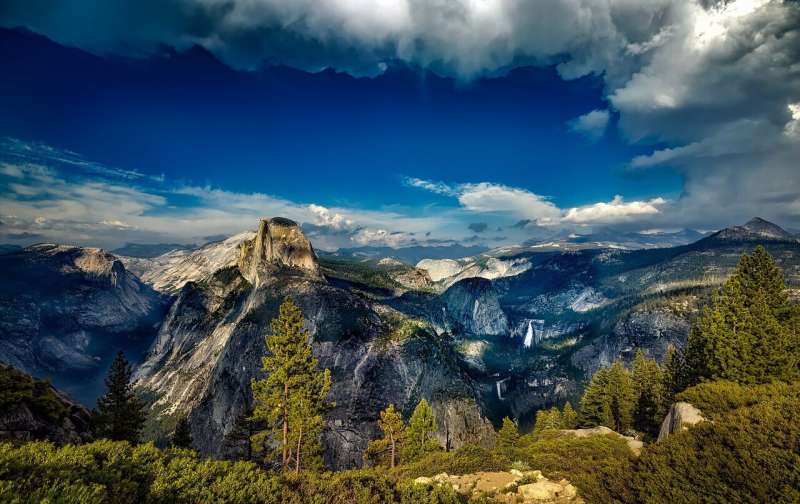California appears to be in for a dry, warm winter

December typically marks the onset of winter, but you'd never know it by looking at California.
Mountain ranges lay blackened by wildfire as record heat scorched the Golden State through fall. Daytime temperatures in Los Angeles have hovered around 80 degrees through Thanksgiving. Southern California has experienced scant rain since February—with no precipitation in the forecast. And nearly all of the state is experiencing extremely dry or drought conditions again.
In a year beset by upsets, on comes La Niña with a seasonal gift of warm, dry conditions. Federal weather forecasters say there's greater than a 90% chance such conditions will prevail across much of California and the Southwest this winter.
Warm weather is great if you like wearing shorts, sandals and sunglasses at Christmas. But it's not so good for water supply, wildlife, agriculture or air quality.
Ocean conditions, including La Niña, play big role in shaping California winters
"There's a good chance this winter will be drier and warmer than average. This is likely to affect the Sierra Nevada snowpack and the timing of spring runoff, which can lead to trouble next year with the water supply in California," said Lowell Stott, professor of Earth sciences at the USC Dornsife College of Letters, Arts and Sciences. He studies how ocean temperatures influence weather and climate with a focus on drought cycles in the U.S. West.
La Niña occurs when below-average sea surface temperatures prevail across the equatorial Pacific Ocean. Winds blow warm water west across the Pacific, affecting rainfall and weather patterns around the world. It happens every few years, often punctuated by the opposite condition, El Niño.
Climate change is in play as a long-term warming challenge, Stott says, but the El Niño Southern Oscillation cycle, as it is known, has been around a long time. The complex ocean and atmospheric interplay has direct consequences for California.
"It's so dry in California because of the complicated and dynamic role that the oceans play, which isn't always easy to predict," said Professor Naomi Levine, an expert in climate change and chemical and biological oceanography at USC Dornsife. "We'll likely have a La Niña year, which typically means a warm and dry winter in Southern California, but competing forces in the North Pacific can influence ocean temperatures and atmospheric river storms that affect California."
For example, Levine said a wildcard this winter is a giant blob of warm water soaking along the Pacific Northwest, independent of La Niña conditions in the equatorial Pacific. The blob warms the air above it and can influence storm pathways. If the blob slides down the West Coast, it can trigger algae blooms that affect marine life in California, which previously happened in 2015.
Dry winters can lead to serious storm issues like mudslides
Even in a dry winter, storms can be a risk to burn areas. Sometimes, so-called atmospheric rivers slam into California, dumping lots of rain fast. Even if seasonal precipitation is below average, a few well-placed, intense storms can do a lot of damage, explained Josh West, professor of Earth sciences and environmental studies at USC Dornsife.
"So much land burned this year across California and the West that we have heightened risk for damaging debris flows," he said. "We've dodged a bullet so far because it's dry, but that could change with big storms."
West is an expert in the landslides and debris flows that can occur after fires and during winter storms. He said that the Bobcat fire exposed a lot of bare soil in the San Gabriel Mountains north of the Los Angeles basin—one of the steepest and fastest eroding mountain ranges in the world. He said as little as 15 minutes of intense downpour can trigger mudslides in local mountains.
When and how rain will eventually come remains to be seen. What seems clear is more dry and warm weather lies ahead, making this a holiday season for sunscreen or sandals rather than mittens or umbrellas.
Provided by University of Southern California



















